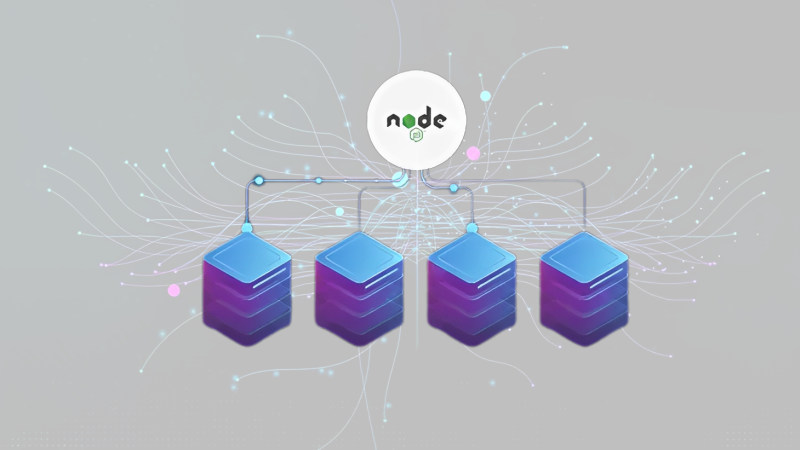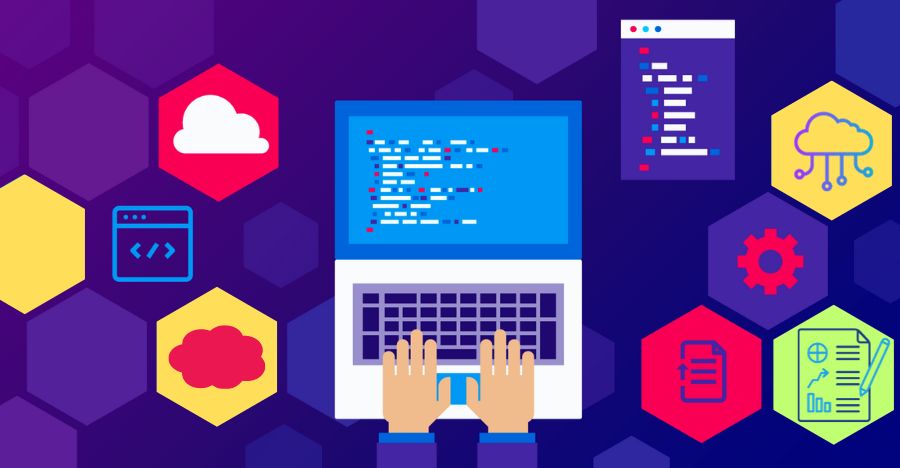Introduction to Data Management in Microservices Development
Modern software development organizations work in quite competitive conditions, so microservices architecture has become very popular. Microservices have many benefits such as scalability, adaptability, and faster time to market. Nevertheless, data management frequently presents difficulties for microservices development services.
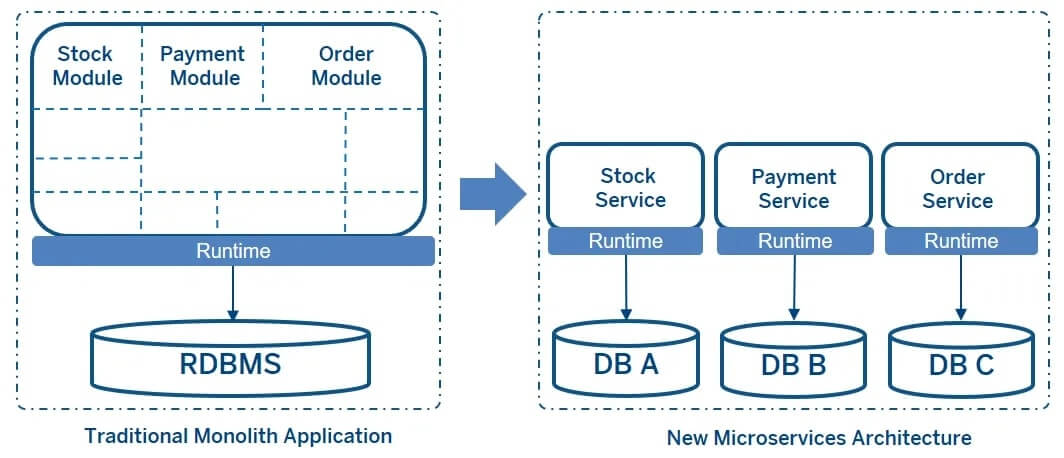
Data management in traditional monolithic architectures is comparatively uncomplicated. Nevertheless, data management becomes increasingly intricate in a microservices ecosystem where individual services possess distinct databases. Microservices necessitate friction less communication and data sharing while guaranteeing consistency and preventing data duplication or conflicts.
Challenges in Data Management for Microservices
Handling data in a microservices system presents unique difficulties. Ensuring data consistency is a significant obstacle. Data consistency in a monolithic design is provided by transactions, which are not easily attainable in a distributed microservices development services ecosystem. This might result in data inconsistencies and potential conflicts when numerous services attempt to update the same data concurrently.
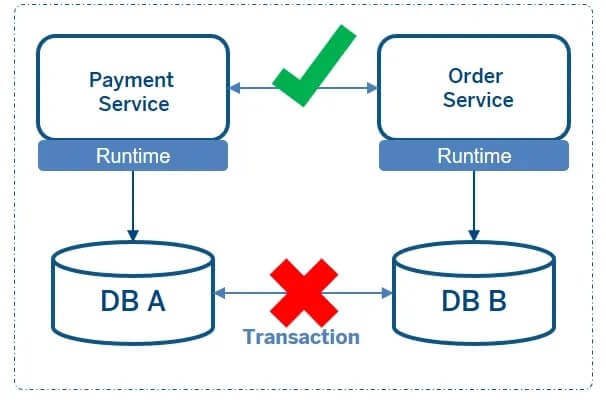
Yet another obstacle is guaranteeing the accessibility and dependability of data. Microservices development services are engineered to possess a high level of availability and resilience. However, this also implies that failures can happen at any system level. In the event of a single service failure, it should not result in the complete shutdown of the entire system. Nevertheless, this can result in partial failures, wherein certain services may be inaccessible or provide obsolete data. Overseeing these instances of failure and guaranteeing data accessibility throughout the system can be intricate.
Introduction to Command Query Responsibility Segregation (CQRS)
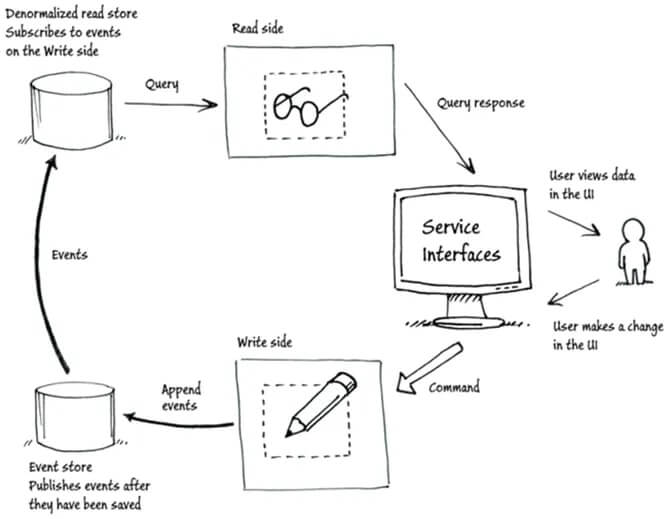
Command Query Responsibility Segregation CQRS is an architectural pattern that tries to deal with the intricacies of data management within a microservices development services framework. The system divides the read and write activities into the Command and Query Model.
The Command Model executes write operations, such as data creation, modification, or deletion. Specialized services manage these processes and are usually carried out in a transactional way to guarantee data consistency. The Command Model prioritizes the preservation of data integrity and the enforcement of business standards.
Why is Node.js such an excellent platform for a Microservices architecture?
Node.js is an excellent open-source platform that is well-suited for building Microservice architecture. It allows developers to create modular, independent services.
The Query Model is responsible for executing read operations, namely for retrieving data to be displayed or analyzed. The Query Model is designed to prioritize rapid and effective retrieval operations and can be expanded separately from the Command Model. This enables enhanced performance and scalability, as operations that involve reading data can be managed by dedicated services specialized for data querying.
Benefits of Leveraging CQRS in Microservices Development Services
Utilizing CQRS in the construction of microservices has numerous advantages. First and foremost, it enables enhanced scalability and performance. By segregating the read and write activities, the system can be expanded autonomously according to the specific demands. This guarantees that activities that involve a significant amount of reading do not hurt the performance of operations that involve writing and vice versa.
Furthermore, CQRS facilitates enhanced data consistency. Utilizing transactions in the Command Model ensures the preservation of data integrity, even in a distributed setting. A dedicated service handles each write operation to reduce conflicts or inconsistencies caused by simultaneous updates.
In addition, CQRS advocates for a modular and decoupled architecture. Every microservice can concentrate on its distinct duties, whether it involves managing write operations or offering read access to data. This facilitates the maintenance, testing, and deployment of individual services without causing any influence on the entire system.
How CQRS Enhances Performance in Microservices Development Services Architecture
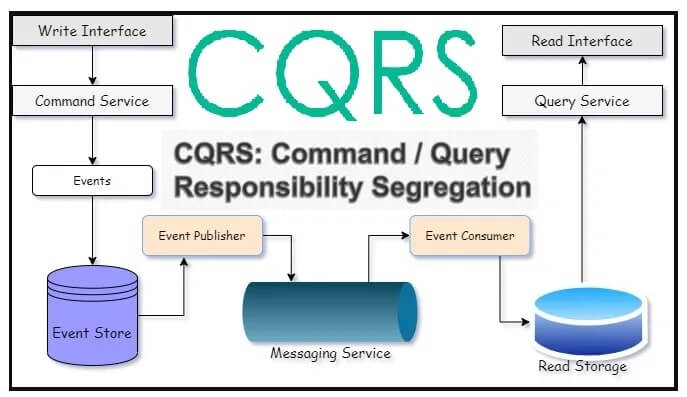
CQRS improves efficiency in microservices architecture by optimizing the read and write processes independently. Within a conventional monolithic architecture, reading and writing operations are commonly executed on a single database, resulting in potential limitations on performance. CQRS enables dedicated optimization of each operation by segregating the read and write models.
The Query Model, responsible for executing read operations, can be enhanced to achieve rapid and efficient data retrieval. Methods such as caching, indexing, and denormalization can be employed to improve the efficiency of reading operations. Conversely, the Command Model can prioritize preserving data integrity and enforcing business rules without optimizing for read operations.
The division of responsibilities enables improved scalability and performance. To accommodate higher levels of read traffic, the system can be horizontally scaled by incorporating additional instances of the Query Model services. Furthermore, while the Command Model does not prioritize read optimization, it can concentrate on effectively managing write operations, guaranteeing the integrity and consistency of data.
Implementing CQRS in Your Microservices Development Company
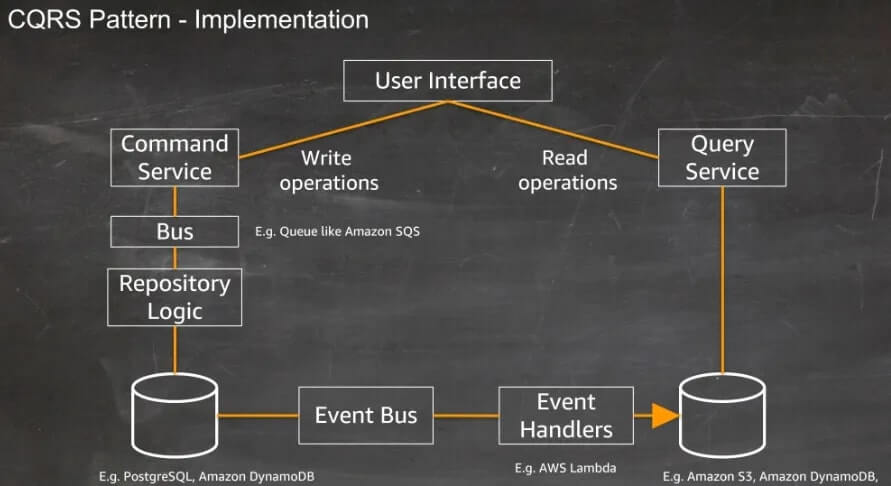
Incorporating CQRS into the development process of your microservices firm necessitates meticulous planning and thoughtful deliberation. Below are a few essential steps to begin:
Enumerate the services that might gain advantages by applying the Command Query Responsibility Segregation (CQRS) pattern. It is crucial to assess the individual requirements of each service to determine whether the separation of read and write activities is necessary.
Create a Command Model specifically tailored to manage write operations. This encompasses the establishment of essential commands, validation rules, and business logic. It is advisable to employ a transactional method to guarantee data consistency.
Create a Query Model that is specifically designed to handle read operations. This entails establishing the essential queries and enhancing the process of retrieving data. It is advisable to employ strategies such as caching, indexing, and denormalization to improve the efficiency of reading operations.
Develop the essential framework to facilitate Command Query Responsibility Segregation (CQRS). This may involve establishing distinct databases for the Command and Query Model and implementing the requisite communication protocols between the two models.
Conduct tests and make iterative improvements to your implementation. Thoroughly test your CQRS system to verify its performance, scalability, and data consistency. Supervise the operational system and implement any essential enhancements or modifications according to actual usage in practice.
Best Practices for Data Management with CQRS and Microservices
Adhering to recommended practices is crucial when deploying CQRS and microservices to guarantee efficient data management. Here are some essential guidelines:
Maintain a compact and concentrated Command Model. Every microservice must possess a distinct and well-defined duty and manage a specified set of writing operations. This guarantees improved maintainability and mitigates the likelihood of conflicts or contradictions.
Utilize event sourcing as a method for persisting data. Event sourcing enables storing data changes as a sequential series of events rather than solely the present state. This feature ensures a comprehensive record of all activities and enables convenient playback of occurrences, if necessary.
Take into account the concept of eventual consistency when performing read operations. Attaining instantaneous consistency across all services might pose a challenge in a distributed system. Alternatively, contemplate employing eventual consistency, a mechanism in which the system gradually reaches a state of consistency over a specific duration.
Deploy monitoring and logging techniques to effectively monitor the performance of your microservices and promptly identify any bottlenecks or problems. Utilize measurements and performance indicators to pinpoint areas that want enhancement.
Tools and Frameworks for CQRS in Microservices Development
Microservices Multiple tools and frameworks are accessible to facilitate the implementation of CQRS in developing microservices. Several widely recognized options include:
The Axon Framework is a Java framework that provides the basic building blocks to implement Command Query Responsibility Segregation CQRS pattern and event sourcing in a microservices architecture.
NServiceBus is a .NET, CQRS-supporting messaging framework with features like routing with pub/ sub patterns and dependable message delivery.
EventStore is a free, open-source database created purposely for event sourcing. It facilitates storing and retrieving events, keeps track of data integrity, and provides a history of modifications made.
Apache Kafka is a distributed streaming platform that could function as a message broker to facilitate Command Query Responsibility Segregation CQRS. It provides practical and reliable messaging that can handle large volumes of data.
Conclusion
In summary, data management plays a significant role in microservices development, and utilizing CQRS can significantly improve performance and scalability. Due to separating the read and write operations, CQRS enables efficient optimization, data consistency, and modular architecture.
In developing CQRS, a proper planning approach is dictated by carefully considering what each microservice has to achieve. Utilizing best practices tools and frameworks tailored to CQRS can simplify implementation.
Unlocking CQRS’s potential will help your microservices development firm overcome data management challenges and achieve better performance, scalability, and reliability in your architecture with microservices.
Read More:
Let’s take a look at the microservices orchestration pattern and see one of the most effective ways of doing orchestration within microservices.


